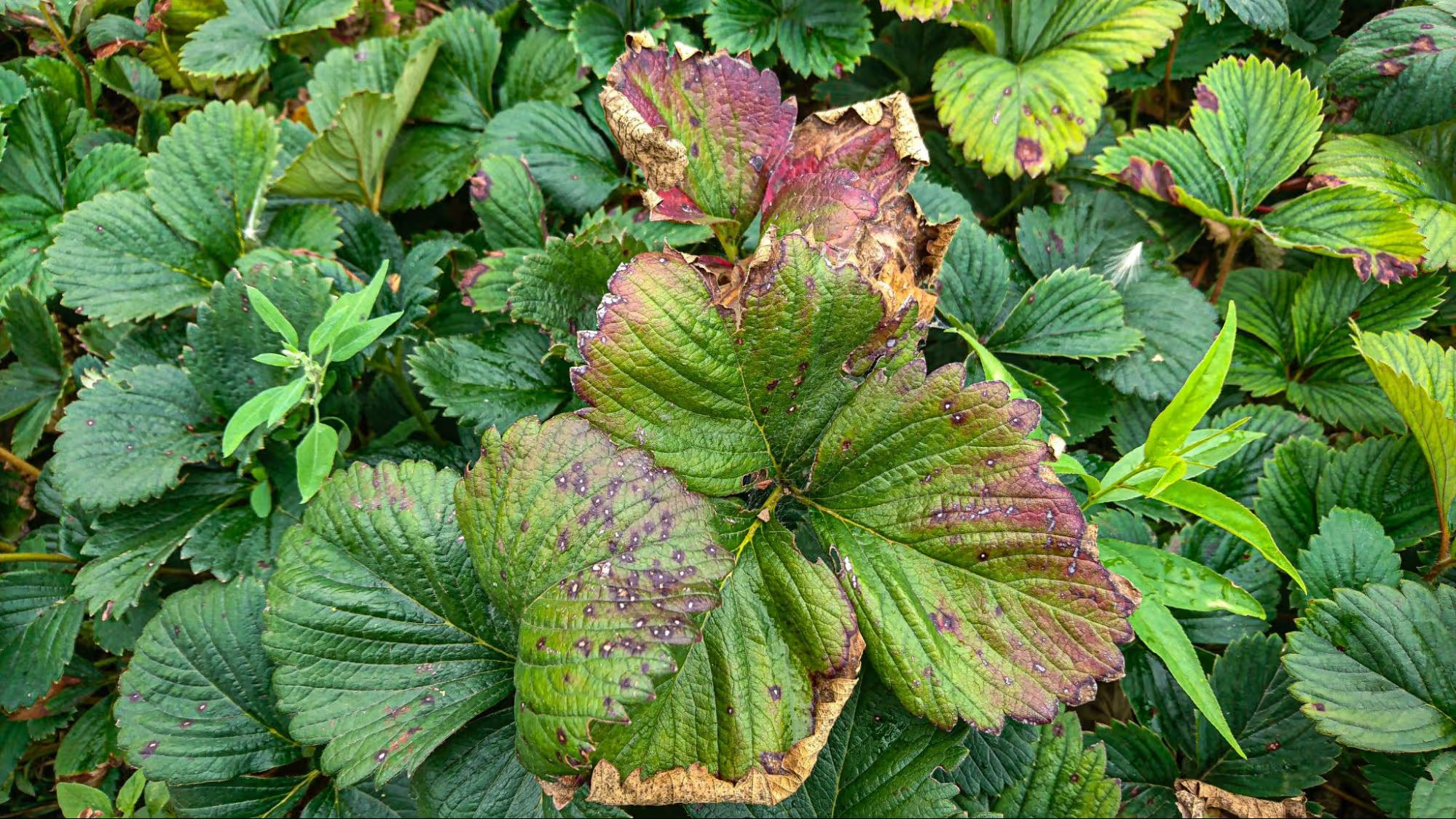
Strawberries are among the most popular and widely grown fruits in the world, valued for their sweet taste, vibrant color, and nutritional content. However, during cultivation, they face numerous challenges such as diseases and pest infestations, which can compromise plant health, reduce yields, and affect fruit quality. The most common threats include fungal diseases like gray mold and powdery mildew, as well as infestations of aphids and mites.
Strawberries are relatively easy to grow but are highly susceptible to various diseases, especially fungal infections that spread quickly in warm and humid conditions.
Gray Mold (Botrytis cinerea)
Gray mold is one of the most widespread fungal diseases affecting strawberry fruits, especially during wet and rainy conditions. Soft, brown spots appear on the fruit, soon covered with a gray, powdery coating. Infected fruits quickly rot and become unusable.
Treatment and Prevention:
To prevent gray mold, ensure good air circulation by avoiding dense planting and maintaining proper spacing between plants. Use drip irrigation instead of overhead watering. Remove infected fruits immediately. Fungicides containing active ingredients like fenhexamid or boscalid can be applied during flowering and fruit development, following manufacturer instructions.
Powdery Mildew (Podosphaera aphanis)
Recognized by a white, powdery coating on both sides of the leaves, powdery mildew can also affect flowers and fruit. It appears most often during warm, dry weather. Infected leaves curl, dry up, and reduce photosynthesis, affecting fruit development.
Treatment and Prevention:
Plant mildew-resistant varieties. Ensure proper air circulation and avoid excessive use of nitrogen fertilizers. Fungicides based on sulfur or triazoles should be applied at the first signs of infection and repeated as needed.
Leaf Spot (Mycosphaerella fragariae)
This fungal disease causes small, round, purple-brown spots on strawberry leaves. Over time, the centers of the spots may lighten, and leaves weaken and fall off, significantly reducing yields.
Treatment and Prevention:
Crop rotation and avoiding replanting strawberries in the same spot each year are essential. Regularly remove infected leaves and plant debris. Fungicides like captan or mancozeb can be used early in the season to protect young leaves.
Anthracnose (Colletotrichum spp.)
Anthracnose is a serious fungal disease that can infect all parts of the strawberry plant (leaves, stolons, crowns, and especially fruit). Sunken, dark spots appear on the fruit, which may ooze orange spores and rot in moist conditions.
Treatment and Prevention:
Use only certified, disease-free seedlings. Avoid overhead irrigation. Fungicides such as azoxystrobin can be used preventively, especially during warm and humid periods. Infected plants should be removed and destroyed.
In addition to fungal diseases, strawberries are targeted by various insects that damage leaves, stems, and fruits, resulting in lower yields and reduced fruit quality.
Aphids (Aphididae)
Aphids are tiny insects that feed by sucking plant sap, weakening the plant and potentially transmitting viral diseases. Infected leaves curl, yellow, and become deformed.
Treatment and Prevention:
Aphids can be controlled with insecticidal soaps, natural oils, and beneficial insects like ladybugs. Chemical insecticides may be used in severe infestations, with care taken to protect beneficial insects.
Red Spider Mites (Tetranychidae)
These microscopic pests suck sap from plants, leaving tiny white spots and creating webbing on the undersides of leaves. They are most active during hot, dry weather and reproduce quickly.
Prevention and Control:
Maintain higher humidity and wash plants with water to help reduce mite populations. In more serious cases, use acaricides. Biological control includes beneficial predatory mites (Phytoseiulus persimilis).
Strawberry Bud Weevil (Anthonomus signatus)
This small insect lays eggs inside flower buds and feeds on them, preventing blossoms from opening and fruit from forming.
Prevention and Control:
Monitor for adult weevils in early spring and apply insecticides before flowering. Remove infested buds and maintain field cleanliness to prevent overwintering of pests.
Successful strawberry production requires timely identification and management of diseases and pests that can seriously impact yields and fruit quality. By applying preventive measures, selecting healthy planting material, maintaining field hygiene, and using appropriate plant protection products, damage can be significantly reduced, ensuring healthy and productive strawberry crops. Continuous monitoring and education on modern protection methods are essential steps toward sustainable and profitable strawberry farming.